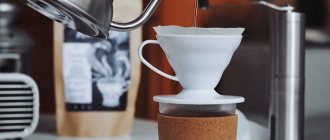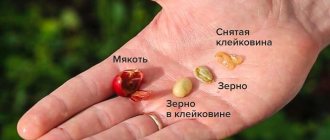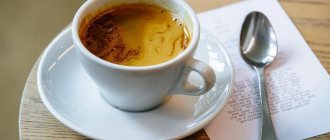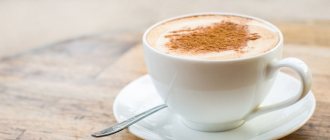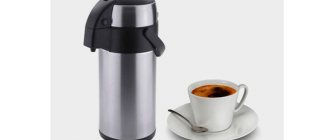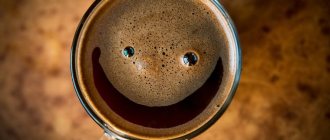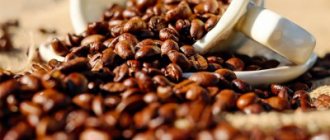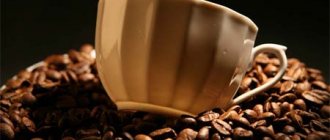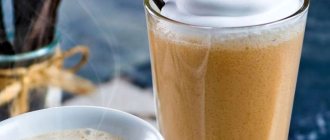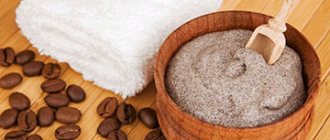Paper filters are the most common types of filters for drip coffee makers and more. They have two undeniable advantages - ease of use, in which there is no need to wash anything - after preparing the drink, the bag is simply thrown away, and the quality of filtration - you can even add powdered grinding, and it will be filtered efficiently. We'll tell you all about paper coffee filters - how to choose, how they differ, and whether you can make them yourself.
History of invention
While humanity has been drinking coffee for hundreds of years, the paper filter was invented relatively recently, just over a century ago, by a German housewife named Melitta Benz. Melitta didn’t like coffee sediment in the cup, and came up with the idea of putting a blotter from her son’s notebook into a small pot with holes. Already in 1908, the method was patented, and the Melitta company, which today is run by the grandchildren of an enterprising woman, is still a leader in the production of disposable coffee filters.
Quality and thickness of filters
While we're just talking about differences in filter processing technology, don't forget that filter quality and thickness are just as important to the purity and repeatability of your brew profile, as well as your overall flow rate. A slight difference in the thickness of filters from the same package can create different tastes in seemingly identical cups.
Choose filters that are most suitable for your cooking method and always pay attention to their thickness. If the filter is too thin, the water will spill too quickly, and if it is too thick, less oils will get into your drink and this can negatively affect its health.
Benefits of disposable paper filters
In addition to the obvious convenience and filtration of even the smallest particles of grounds, such filter bags also have other advantages:
- The smallest pores trap the compounds cafestol and caffeol, natural alkaloids, as well as oils, which, according to some data, can increase cholesterol. So coffee made from disposable filters is definitely healthier than coffee made from reusable ones.
- Paper is an environmentally friendly, biodegradable material that is safe for nature and humans, and it decomposes faster than any other options, for example, the same fabrics through which coffee is also filtered.
- The growth of bacteria and the appearance of an unpleasant musty smell and taste are excluded, since the product is thrown away immediately after use.
- There are practically no disadvantages, except that it can be used once. And you need to monitor stocks and purchase suitable or universal modifications in time.
Filters for coffee makers - varieties
True coffee connoisseurs know that its taste depends not only on the quality of the ground beans, but also on the filtration of the finished drink. Coffee maker filters are made from a variety of materials. They have different characteristics and costs.
Paper
The most popular type of filter, which has been used for more than 100 years. In production, both unbleached brown paper sheets and white ones are used. Brown products that are not bleached and do not have glue in the seams are considered the most environmentally friendly. However, they can impart a cardboard taste to the drink. White paper has no foreign odor.
The most expensive and high-quality products are made from bamboo.
Bamboo fibers ensure high purity of the finished drink and have no odor. The cost of such filters is high.
The main advantages of paper filters include:
- The porous, dense material traps even the smallest solid particles, filters natural alkaloid compounds and oily diterpenes, which contribute to increasing cholesterol levels in the human body.
- Used disposable paper products are discarded, preventing the possibility of fungi developing like reusable filters.
- They have a long shelf life.
- The installation and removal process is very simple.
- Used filters quickly decompose and do not harm the environment.
The main disadvantages include only the need to regularly purchase filters. When preparing a coffee beverage frequently, the cost of paper filtration can be significant.
Nylon
Some models of coffee makers have a plastic or metal cone covered with nylon as a filter element. Synthetic fibers are durable, hypoallergenic, and have a long service life. Reusable nylon filters can be used at least 60 times. The average cost per application is low.
The smallest particles of ground beans penetrate through the nylon mesh, so it is recommended to use medium and coarse grind coffee. The filtered grounds are immediately cleaned off, which increases the time required to prepare a cup of aromatic coffee.
Gold
Some manufacturers coat filter frame elements with nylon mesh with titanium nitride. The result is a product with a metallic golden sheen. The titanium coating increases the service life of the filter and makes it easier to clean.
Relative disadvantages include the high cost of the products and the inability to prepare a drink from finely powdered coffee. To maintain the hygiene of the filter, it must be thoroughly cleaned of grounds particles.
Fabric
In the production of fabric models, cotton, muslin or hemp fabrics are used. Textile fibers, when interwoven, form large pores, which allows some of the grounds to leak into the cup. Fabric filters are reusable and have a shelf life of no more than 180 days if used daily.
The disadvantages include the rapid loss of attractive appearance, since coffee darkens the fibers of the fabric.
Cleaning must be thorough and timely. Textile filter elements are affordable.
Metal
The products are distinguished by their strength and durability. Most often, metal filters are made of stainless steel. The service life is unlimited, the risk of mechanical damage is minimal. Both manual cleaning and dishwasher cleaning are allowed.
The stainless steel mesh does not retain aromatic oils or alkaloid derivatives. The drink is strong, with a small amount of grounds at the bottom. From an environmental point of view, metal filters are optimal because they do not require regular replacement.
Types of disposable paper filters
There are many modifications on the market that differ in paper type, shape, size and other characteristics. The choice depends on the type and brand of coffee maker, your preferences, budget, etc.
Filter paper
The production uses bleached and unbleached paper, as well as bamboo.
- Natural filters, made from unbleached brown paper. This is the natural color of cellulose, which is obtained from wood. There is no glue in the seams and no bleach is used. It is believed that this is the most environmentally friendly option, but coffee lovers may feel the taste of cardboard in the products of some manufacturers. To get rid of it, you first need to pour boiling water through the filter, drain the water, and then pour in the coffee and brew it as usual. If you notice a taste, repeat the washing procedure twice. If it doesn’t help, switch to filters from another manufacturer.
- White paper filters can be bleached with chlorine dioxide (ECF) and oxygen or ozone (TCF). The bleaching method is indicated on the packaging. Oxygen bleaching is considered to be less harmful to the environment. For chlorine, it is not pure chlorine that is used, but its compounds, and the technology is designed in such a way that there is no chlorine left in the filters; using them is completely safe for health. Bleached filters do not introduce any foreign smell or taste, but notes of cardboard (especially in inexpensive options) can be felt, and in this case, rinsing with boiling water should also help.
- Bamboo ones are produced mainly by Melitta, although you can find options from Aliexpressa made by little-known manufacturers. In this case, bamboo replaces most of the cellulose, which causes less harm to the environment and eliminates the cardboard taste in the drink. They usually cost more than their cellulose counterparts.
Filter shape
Depending on the type of coffee maker and the options for preparing the drink, filters can be flat-bottomed, conical, with smooth or ribbed walls.
- With a flat bottom - more suitable for brewing drip coffee directly in a cup, although they can also be used in coffee makers.
- Conical - for a drip coffee maker, but can be used for both a Chemex and a cup.
- Filters with ribbed walls are the best choice for pour overs, as they distribute the liquid evenly, but they are also used for cups, since the size is easily adjusted.
If necessary, filters of different shapes can be interchanged, but care must be taken to ensure that the product does not move too much or become deformed in the process.
Filter size
The dimensions of the filter bags are always written on the packaging. And they usually indicate the appropriate size on the holder itself, inside the coffee maker. For example, the Melitta brand indicates 1x2 or 1x6 on the coffee maker, which means that in one fill the filter can hold the amount of coffee intended for 2 or 6 cups. In other coffee makers, it is also usually calculated approximately by the number of cups; the most common options for disposable coffee filters are No. 2 and No. 4 (for 2 and 4 cups, respectively). Typically, No. 2 is used for coffee makers with a capacity of 600-800 ml, and No. 4 is used for a capacity of about 1-1.2 liters.
For brewing in a cup, you can take bags numbered 1 or 2.
Trip to coffee shops talking about filter coffee
Editor of www.restoclub.ru Tanya Bakun meets in the Mad Espresso Team with coffee gurus - Ira Sharipova and Kolya Gotko. The plans are to discuss the trend for filter coffee, figure out what determines its taste and what to ask baristas in coffee shops, and also create a route to different coffee shops, try the filter everywhere and share your impressions.
Ira Sharipova, a member of the Mad Espresso Team project, a winner of barista championships and a professional coffee evaluator with certificates of taste judge and Q-Arabica Grader, teaches at the barista school of the North-West Coffee Company.
Kolya Gotko, co-owner of the coffee houses “More Coffee”, “Coffee in the Kitchen”, Bolshecoffee Roasters, “Ordinary People”, “Meet Joe!”, co-owner of one of the main roasting stations in the city, apologist for specialty coffee with a certificate from the European Specialty Coffee Association .
— Do I understand correctly that filter coffee turns from an entertainment for coffee lovers into a drink for every day?
Kolya: Yes, people are gradually switching from Americano to filter. Even chains like Boucher or Starbucks already sell filter coffee.
— What is the essence of filter coffee and how does it differ from Americano?
Ira: This is a drink prepared not in a coffee machine, but in a special device where a paper funnel is placed - a filter, ground coffee is poured into it, and everything is filled with hot water. The water passes through the ground coffee and turns into the finished drink. We pour this coffee into large thermoses. A person gets his cup instantly, he doesn’t have to wait for the barista to prepare the same Americano.
This is how a filter coffee maker works
Kolya: The most important difference between a filter and an Americano: a filter is a complete drink, 100% coffee; Americano is espresso diluted with water. The latter is the same as cooking 5 liters of excellent borscht, and then - oops, let's dilute it with 5 liters of water. The borscht will become more “empty”, watery, and the richness of taste will disappear. The same thing happens with Americano coffee.
Filter is a whole drink, 100% coffee; Americano is espresso diluted with water.
Ira: As a matter of principle, we do not sell Americano here, because we use high-quality specialty beans (high-quality coffee beans, to which evaluators assigned at least 80 points on the international scale - editor's note) and we want the guest to feel its taste and receive complex drink. Throughout the 3 years of Mad Espresso's operation, our baristas explain day after day why the filter is better than the Americano. And hurray! Previously, we brewed one thermos of filter coffee per day and barely sold it, now we use at least 5-6 large thermoses.
— What determines the taste of filter coffee?
Ira: It all depends on what grain you use: specialty or basic; what a roast. Then the grind size, quality and quantity of water, and temperature matter. Much depends on the individual barista: the grain may be excellent, but he too much water, and the coffee loses its density.
— How to distinguish bad coffee by taste?
Kolya: You take a sip and feel a strong dry bitterness. Most likely this means that the coffee is over-roasted, or the establishment has dirty equipment with remnants of previously brewed coffee. The higher the quality of the coffee, the richer the flavor bouquet, more associations will come, and the taste will change as it cools.
— What should I ask the barista if I come to a coffee shop and want to drink a filter?
Kolya: What do you have in your filter today, grain from which country? What will it taste like? It’s great if the barista names 2-3 taste descriptors. A deeper level - if he talks about the method of grain processing.
- Let's make a route, ask these questions in coffee shops and try their filter coffee.
After discussion, we end up with the following list:
- Doris on Nevsky. This is a relatively new coffee shop, they serve both average coffee and high-quality specialty beans, a popular place.
- Sturbucks. Ira and Kolya are sure in advance that you won’t find worse coffee in the city and are ready to tell you why.
- "Change". A place for coffee geeks. Everything there should be according to the canon.
- TCHK. A coffee shop in a separate house in the courtyards on Petrogradka, according to the results of voting by our subscribers on Instagram, is the best coffee shop in the city.
- "Boucher." An example of a network project where they are experimenting with high-quality grain and slowly introducing filter coffee.
DORIS
Cost of filter coffee: 100 rub.
The coffee shop has been operating in the old part of Nevsky Prospekt for several months, but is already popular. Inside we find an interior from an Instagram feed, all the tables are occupied by girls.
- Hello! What's in your filter? — Brazil, the taste will be chocolate, nuts...
We take coffee, move on to tasting and discussion at the table.
Kolya : It’s clear that the barista guy is trying, but it would be cooler if he said not just “chocolate”, but, for example, “milk chocolate”, not just “nuts”, but “peanuts”... The taste is slightly dusty. This coffee cannot be called specialty. But this is basic good coffee. According to the taste assessment, this Brazilian grain is somewhere around 79-80 points, and for me, specialty is everything above 85 on a 100-point system.
Ira: While the coffee is hot, we feel only 60% of the taste; the most interesting thing happens as it cools. But here the bouquet does not really reveal itself, because there are few taste descriptors, and they are all around nuts and chocolate. As a result, we get drinkable coffee, but without a long aftertaste. This coffee goes well with conversation or dessert.
Kolya: It’s interesting that for the filter they brew basic grain, and make an alternative in specialty. That is, they focus on both the average guest and the advanced one.
Doris Local
Nevsky Ave., 150 Vosstaniya Square, Mayakovskaya
Go to establishment page
STARBUCKS
Cost of filter coffee: 175 rubles.
The chain coffee shop on Nevsky resembles a coworking space: almost every guest here has a laptop.
Ira: Notice how it smells here. Very pungent smell.
- Hello! Do you have filter coffee? - Yes. But it's better to try it in a pour-over. — We would still like a filter. What do you have in it today?, we insist. “Pike Place bean (Starbucks signature coffee, which is sold in all coffee shops - editor’s note),” the barista answers barely audible. - Where? “From Latin America,” there is a plea in his eyes not to ask anything more. - What does it taste like? - we finish. “Hints of caramel and chocolate,” the guy says as if at random.
Phew, we pulled out the answers with grief in half, we sit down at the table. Ira and Kolya take a long time to gather their strength and try half a sip each.
Ira: This burned grain goes straight into the coals. There is no acidity or any fruity or chocolate notes to be found here. Just the wildest bitterness!
Kolya: Just look at the equipment and you don’t have to try anything. Oil appears on their coffee grinders, which indicates that the coffee used is of very poor quality. You won’t see this anywhere in specialty coffee shops.
You can't drink what they pour at Starbucks.
Ira: I have a feeling that they are forced to burn grain into coals in order to drown out the old age of the crop and other shortcomings. I think Starbucks all over the world has the same bitter drink: be it in America or in Russia. But someone is involved in quality control of coffee in the company, someone brews this coffee, sets recipes - it’s scary to think about it.
Kolya: Those who don’t yet have a broad enough coffee horizon drink at Starbucks. It’s a matter of time and our task is to bring coffee culture to the masses so that more and more people understand: what they pour at Starbucks cannot be drunk. 7 years ago we opened the first specialty coffee shop in St. Petersburg, now there are more than 30 of them - this is more than in any city in Russia, more than in Moscow. The process is underway.
Starbucks
Nevsky Prospekt, 55 Mayakovskaya, Nevsky Prospekt
Go to establishment page
"CHANGE"
Cost of filter coffee: 150 rub.
A coffee shop with a minimalist Scandinavian interior on Baskov Lane was opened a couple of years ago by guys from Double B. At Smena they work exclusively on specialty grains. In addition to quality coffee, the place is known for its breakfasts, which change every week.
— What do you have in your filter today? — Brazil, natural processing. - What will the taste be like? - Delicious! - the barista says lazily. - How about more details? - It’s a little awkward that we’re pestering you. “It will be chocolate, nuts, stone fruits,” the guy says in a bored tone, as if the answer is obvious.
We sit down at one of two tables on the street.
Kolya: I’ve never encountered bad coffee with them, but the information approach sometimes suffers.
Ira: For people, good service is more important than good coffee. A person remembers the attitude, and only then perceives the product.
They bring coffee, we try it.
Ira: The coffee is very rich, even when it’s hot there is no aggressiveness or spices, as there was, for example, in “Doris”. You can just smell the stone fruits here: prunes, apricots, raisins; notes of dark chocolate. Let's see how it develops as it cools.
It makes no sense to drink very hot coffee - just like eating freshly prepared food, because the receptors cannot orient themselves, they are simply hot. The bouquet opens to its maximum at about 60 degrees (and is usually served at 90), when you can already calmly perceive the flavors.
It is always worth paying attention to how coffee is stored: in a thermos or in a jug.
But the coffee shouldn’t be too cold either. When you come to buy a filter, you should always pay attention to how the coffee is stored: in a thermos or in a jug. If it's in a jug, it's not very good because it gets heated from below, or the coffee just cools down in it. Constant heating changes the taste, since the coffee seems to be brewed over low heat. The ideal option is if the filter is in a thermos: the finished drink is simply stored there, no processes take place in it.
Kolya: I agree, it’s best to store ready-made coffee in thermoses. But 7 years ago, when the filter was not yet common, we had to pour it into glass so that people could see the product. Up until about 2014, I encountered this reaction when I suggested a filter instead of an Americano:
“No, no, I won’t have instant, I’d like natural, please.”
Ira: Yes, I also heard this: “Just don’t pour from the barrel, no, no, no.”
(laugh)
Kolya: 12 years ago they couldn’t even write “filter coffee” on the menu, because, according to marketing research, people associated “filter” with cigarettes; it was perceived as something cleansing and had nothing to do with good taste. The “Ideal Cup” was then given the name “kahve” - this is what filter coffee is called in Finland, we still write this term in our menu.
12 years ago they couldn’t even write “filter coffee” on the menu.
Ira: Let's go back to Brazilian coffee, it has cooled down a little. The quality of the grain here is excellent. The bouquet changes, becomes more elegant, silky. Drinking is a pleasure!
Change
lane
Baskov, 20 Chernyshevskaya Go to establishment page
TSK
Cost of filter coffee: 100 rub.
For three years now, a miniature house in the second courtyard on Petrogradka has been one of the main coffee spots in the city. TC stands for “Your Cup of Coffee.” There are only a couple of seats inside; in the warm season, everyone hangs out on the street near the blue Zhiguli cars. They love the homely atmosphere and serious approach to coffee. Last year, the team launched its barista training school.
— What do you have in your filter today? - We have two! There is an amazing bright Kenya, there will be a lot of berries in the taste. And Rwanda - it’s a little strange, you’ll feel dried fruits, alcoholic notes, chocolate, something tropical... - Both of us!
We set up on the street near the Zhiguli.
Kolya: Kenya is a clean, comprehensive, reference filter. Rwanda is already for geeks: there is aggression, fermented jam, nervous tropical notes. You can criticize for some herbaceous shades, but against the backdrop of an awesome bouquet - little things.
Ira: It’s very interesting to watch the cooling, amazing bouquets. The guys do a great job with coffee here. Despite the fact that they are working in the yard, there are always people here: they drink here or take it with them.
Tanya: By the way, don’t to-go paper cups spoil the taste of coffee?
Paper cups do not affect the taste of coffee, but they do have a big impact on the environment.
Ira: Of course, it’s always better to drink from ceramics. But in general, paper glasses do not affect the taste, but they do have a significant impact on the environment. A to-go glass is usually lined with plastic film on the inside, making it impossible to recycle. And the glass always comes with a plastic lid. It’s great that the trend for coffee in your own glass is now developing. Coffee shops often support this theme and offer discounts to guests who bring their own containers.
TSK
Kamennoostrovsky Prospekt, 18/11 Gorkovskaya
Go to establishment page
"BUSH"
Cost of filter coffee: 200 rub.
A popular network with an active environmental program. At Bush, they collect garbage separately, purify water in production, recycle waste, and offer discounts on day-old baked goods and coffee in their own dishes. Cafes work with specialty beans; in many places they can prepare coffee using alternative methods, and in some they pour a filter from a thermos. Petrogradka has the best coffee. Here, next to the confectionery shop, there is “Coffee.Lab” - a coffee and wine bar.
— What do you have in your filter today? - Ethiopia. - What does it taste like? - There will be a dense body here, the coffee is not very acidic, rather sweet.
Kolya: Well, in general, the guy didn’t say what he’d like. Still, you are waiting for some specific descriptors.
Ira: There is a question about roasting: perhaps they overdid it a little, but these are details. In general, there is clearly a specialty here, this is good quality coffee.
Kolya: There’s this thing with “Boucher”: they’re great, this is the best example of a large-scale network project. But due to their scale, they don’t pay enough attention to training staff regarding coffee. Therefore, in the end, we meet average baristas who do not describe the taste of coffee, may confuse the filter with a funnel, and so on. The quality of the grain here is comparable to what we just tasted at TCHK, but it’s clear from everything that the guys live for coffee and want the guest to feel the taste, but here they work on the flow.
Ira: We return again to the fact that not only coffee is important, but also the people who sell it to you. If a person cannot clearly tell you what kind of grain he has, where it comes from, what the taste will be like, or is unfriendly, you should think about whether you need to buy coffee here.
Kolya: Everything is clear with coffee shops: there are a lot of good places in St. Petersburg, go for yourself, try, talk to different baristas, develop your horizons, find your own. The next big step is improving the quality of coffee in restaurants. Alas, it often happens that the chef creates amazing gastronomy, the sommelier creates a sophisticated wine list, but at the end of the dinner the guest is served bitter Lavazza or Nespresso, and this last impression spoils everything. But this is a topic for another conversation.
Coffee Lab
st.
Lev Tolstoy, 1/3Petrogradskaya Go to establishment page
Photos: Tatiana Bakun
Source https://www.restoclub.ru/review/testdrive/trip-po-kofejnjam-s-razgovorami-pro-filtr-kofe
Prices for paper coffee filters
Sometimes they say that disposable products are expensive, and it’s worth switching to reusable ones, but if you calculate the average price for one piece, it turns out to be 1.5-4 rubles, which is not so much. And there are filters designed to prepare 2-4-6 cups or even more. In this case, the cost of one consumable may be less than 1 ruble. At the same time, there is no fuss with washing, no consumption of detergents, water, or time.
It is more profitable to buy filter bags in large packages, so savings can reach 15-25%.
It’s better not to buy generic cheap ones, they are often of very low quality and have a papery taste.
Features of the technique
During filtration, boiling water slowly passes through a layer of coffee powder. In this case, the grounds do not get into the finished drink. It remains in the filter. The preparation technology is similar to brewing espresso, but has certain differences.
To obtain a classic Italian drink, water must pass through coffee fractions under pressure. This takes no more than thirty seconds. The grinding of the grains should be fine. They must be compacted tightly.
When brewing a filtered version, the liquid passes through the coffee powder much more slowly. In this case, only gravity is used. The grinding of the grains should be coarse or medium. This point must be taken into account. Otherwise, there will be no air space left for water to seep through.
When using this technique, the liquid interacts with the crushed grains much longer. Thanks to this, the finished drink is much denser and stronger.
on one's own?
Sometimes paper filters run out at the most inopportune moment. It doesn’t matter, you can use various available means and still prepare a cup of your favorite aromatic drink. Among the options offered by Internet users:
- Plain paper, but preferably less dense. Try rolling a filter out of it and see if it allows water to pass through.
- Paper towels. Guaranteed to let water through, a good option.
- Table napkins, preferably more expensive and dense ones, those that are large in size, often double-layered, possibly with a pattern. Can be laid in 2 layers. Use the thinnest ones folded as they are in the package, alternatively - 2 pieces each. You can also use unscented handkerchiefs.
- Calico fabric, especially washed, is a very convenient option; you just need to cut it approximately in the shape of a paper filter. The edges don’t need to be processed in any way, this is for one time use only. In extreme cases, you can wash and use again.
- Several layers of gauze or a sterile pharmaceutical bandage, but the bandage must be washed to get rid of the pharmaceutical smell and taste that can transfer to the drink.
How to replace the seal and filter sieve of a geyser coffee maker
- Unscrew the top of the coffee maker (hold the body, not the handle).
- Pry up the seal with your fingers or any flat and narrow device (for example, a flat screwdriver), remove it together with the filter.
- Rinse the coffee maker to remove any “coffee debris” that may have accumulated under the seal and filter.
- Clean the old filter (or get a new one) and remove the new seal from the package. Rinse the new seal (and filter).
- Place the seal over the filter and insert it into the top of the coffee maker. Press the seal until it fits into place (under the thread).
15.04.2020
Conclusions:
- Disposable paper filters are the most popular, affordable and easy to use option.
- They come in chlorine or oxygen bleached, unbleached brown (more environmentally friendly) and bamboo (more expensive).
- It is better to take those that fit a specific coffee maker; standard sizes are No. 2 and No. 4, although they are often relatively interchangeable.
- On average, the price of one filter is from 1.5 to 3.7 rubles, and they can be suitable for preparing 2-8 cups.
- You can make a filter yourself from paper, paper towels, napkins, chintz, gauze or bandage.
Advantages
One of the main advantages of this type of coffee drink is its excellent taste. True, this is not the only reason why many coffee lovers choose this method of brewing beans. There are several reasons for this decision:
- If the grounds are not completely strained out, there is a negative effect on the gastrointestinal tract. When using coffee machines, such problems are rarely observed. When brewing in a Turk, particles often remain in the finished coffee. The filter helps remove even miniature fractions.
- It is possible to avoid negative effects on blood vessels. Coffee beans contain components that can impair blood circulation and lead to the deposition of plaques on the walls. The filter prevents these molecules from entering the drink. Therefore, if the permissible dosages are observed, such coffee can be consumed without fear for the cardiovascular system.
- Convenience of preparation. You can brew coffee powder in any conditions where there is access to hot water. You can cope with this task in the office, and even in nature.
What to brew in
Filter coffee is not just one brewing method, but many different ones: drip coffee maker, pour-over, Aeropress, immersion funnel... They are united by the principle that gives the name to the method: the use of a paper, fabric or metal filter during the preparation process. This makes it possible to get a pure drink without suspension, reminiscent of strong tea or compote.
If you're about to start making filter coffee at home, take a look at a drip coffee maker. The brewing principle in it is simple: hot water seeps drop by drop through a layer of ground coffee. The main advantage of an electric drip coffee maker is that you can brew several servings at once with just one press of a button. The cooking process is automated: you select the grain, dosage and grinding, and the machine does the rest for you.
A little about prices
Now you know why quality is so important and understand that when you buy bleached or unbleached filters, you are actually choosing a color. Now it’s worth talking about the cost of products. Unbleached filters go through fewer processes during production, but for some reason they are more expensive than bleached ones.
If you want to save money, then it is better to buy oxygen bleached filters. They are slightly thicker than other cheap alternatives. Of course, if you do not want to harm the environment, it is still better to choose unbleached products. Just remember that you will have to pay a little more for them.
Selecting filters by size
The main criterion for choosing a suitable product is the expected yield of the finished product. To prepare 1 serving, filter No. 1 is sufficient. If you need to make more coffee, then choose products for 2, 4 or 6 servings.
Filters 4 and 2, the difference between which is throughput, are the most popular. For a coffee maker flask with a volume of 0.6-0.8 liters, filter No. 2 is intended. If the flask volume is 1 - 1.2 liters, you should select filter No. 4. Some manufacturers offer models for preparing 8-12 servings of the drink.
Main quality
Natural and bleached filters have little effect on the taste of coffee. However, the quality of the purchased products may have an impact. When choosing filters, you should not try to save money. A difference of a few rubles can significantly affect the taste of the drink.
When choosing a product, you should pay attention not only to the size needed for your favorite coffee preparation method, but also to the thickness. Thin filters allow water to pass through faster. This will definitely affect the coffee brewing process, and not in the best way. The thicker the filter, the more expensive it is. However, the difference in prices is so small that it should be neglected. After all, isn't that so important?
